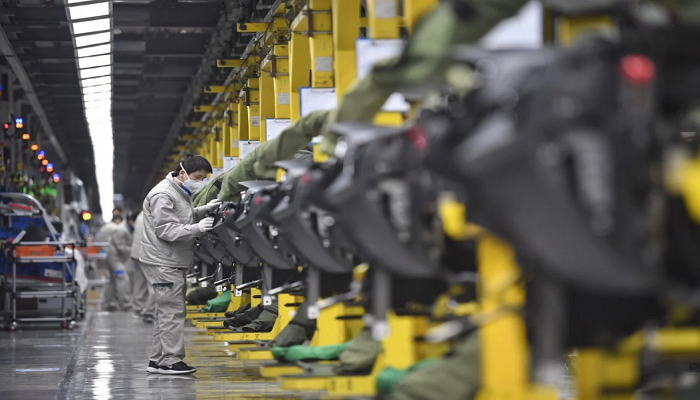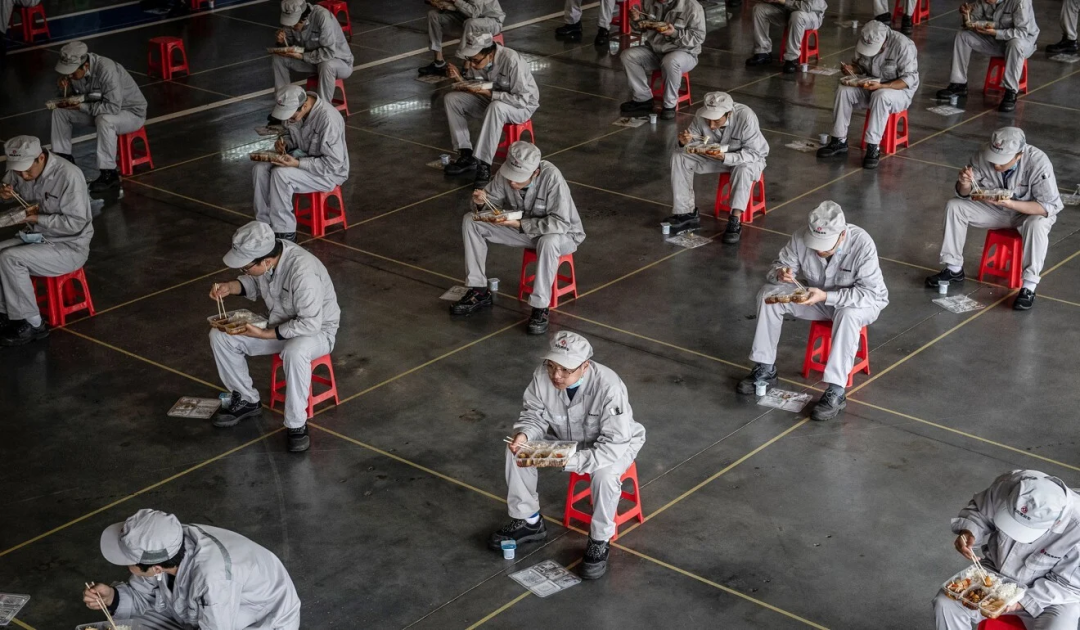SCMP | Staying for the Duration

By Edward Tse
April 29, 2020
Originally published by South China Morning Post on April 29, 2020. All rights reserved.
The Covid-19 outbreak has many speculating whether there will be a mass exit by foreign companies from China after the pandemic. Indeed, the crisis has delivered massive blows to many companies’ supply chains.
A March survey by the American Chamber of Commerce in South China indicates that all 237 respondents have seen their supply chains affected, and 15 percent of respondents were already out of some supplies.
Some governments have echoed these concerns. On April 7, Japan unveiled a relief package of almost US$1 trillion, of which around US$2 billion was earmarked to help manufacturers diversify supply chains away from geographical clusters – primarily China – to other nations.
Soon after, US National Economic Council director Larry Kudlow suggested that the White House should “pay the moving cost” of American companies wanting to get out of China.
On April 14, French carmaker Renault put the brakes on its loss-making venture with Dongfeng Motor Corporation in Wuhan, transferring full ownership of its Wuhan plant to Dongfeng. Unsurprisingly, this triggered worries that foreign companies are starting to leave China because of the pandemic.
Such anxiety is not new. Ever since the virus outbreak, some pundits have predicted China’s relative decline in a post-pandemic “new world order”. Among them was US Secretary of Commerce Wilbur Ross, who said on January 31 that the virus would “help accelerate” the return of jobs to North America.
In early April, US journalist Daniel Greenfield wrote in an article, titled “Pandemic hardening can make America great”, that Covid-19 would lead to a “re-ruralisation” of the US. Instead of massive malls selling a plethora of “Made in China” goods, smaller businesses would sell products made locally for “a more decentralised shopping experience”.

People sit inside Renault’s EZ-GO at the Auto China 2018 motor show in Beijing on April 25, 2018. Renault transferred full ownership of its Wuhan plant to Donfeng Motor Corp this month. Photo: Reuters
There are three main types of supply chains in China. First, labour-intensive ones, such as those in toys, shoes and apparel. For more than a decade, these businesses have been moving from China to lower-cost countries like Vietnam, Bangladesh and Cambodia. They will continue to do so.
The second type includes companies relying predominantly on the US market as their export destination. As a result of elevated US tariffs due to the trade war, they have been transferring at least part of their supply chains to other areas with lower tariffs. For them, unless the US reduces the tariffs, there is little reason to shift back to China.
The third type involves a myriad of suppliers, often located in clusters, to support a main manufacturer, which needs to optimise cost-effectiveness, quality, timeliness and responsiveness. Achieving optimum performance requires an agile combination of scale, operational efficiency and technological sophistication in development, design, testing and prototyping.
This applies to sectors like smartphones, consumer electronics and those involving the internet of things and artificial intelligence. While certain forces will indeed pull some of these supply chains away from China after the pandemic, China also enjoys unequalled advantages.
Designing and maintaining this sort of sophisticated supply chain is not a trivial matter. Manufacturers in China, including their supplier clusters, often with local governmental support, have built this system up over several decades.
In our conversations with clients, we found that senior executives of many global multinationals are now focused on ensuring their companies’ operational stability and cash flow sustainability. They have no immediate plans to leave China.

Employees maintain social distancing guidelines while eating lunch at a Dongfeng Honda auto plant in Wuhan, China, on March 23. After a two-month lockdown, people were allowed to go back to work in the city that was the centre of China’s Covid-19 epidemic. Photo: AFP
These perspectives echo a March survey by the American chambers of commerce in Beijing and Shanghai and consultancy PwC, which found that most US firms in China have no plans to relocate production elsewhere. Likewise, according to Jörg Wuttke, head of the European Union Chamber of Commerce, European manufacturers are also “not eager to exit China”.
Multinationals take their China strategy very seriously and won’t rush into a decision without evaluating several factors, including the post-pandemic global order and the changing nature of globalisation. Of course, for many global executives, the political overhang on top of the pandemic-derived arguments triggers emotional responses and sometimes bewilderment.
Some predict a wave of “deglobalisation” and “deChina-isation”. Conceivably, parts of supply chains will become regionalised or localised in some countries. This could well be the case for those products that require less mass production and whose pricing provides sufficient room for manoeuvring of supply chain economics.
With the emergence of cloud technologies, industrial internet and automation, the future of manufacturing will become more intelligent and distributed, potentially resetting how companies optimise their global manufacturing footprint.
China is likely to remain the core manufacturing hub, or one of the core hubs, for multinationals with the third type of supply chain.
The pandemic has brought numerous challenges for China: a protracted slowdown in the global economy, prevailing anti-China sentiment in the West and the mixing of politics and business. “National security” is now often misused to block Chinese companies from markets and technologies.
China’s manufacturing industry is suffering from core technology bottlenecks, such as in semiconductor chips. The country is currently a key purchaser from US chip makers such as Nvidia, Intel and Qualcomm, contributing a large portion of their total revenues. Nonetheless, China is expected to up the ante in the future to address these bottlenecks.
Despite these challenges, China is heading towards economic recovery, through innovation, investment and consumption. During the pandemic, multinationals’ executives have witnessed China’s governance and crisis management capabilities.
Looking ahead, we will see a surge in demand for digital infrastructure, built using technologies such as cloud services, the internet of things, artificial intelligence, 5G and blockchain technology, as the backbone of China’s next-generation smart cities.
We are unlikely to see a mass exodus of foreign companies from China. Most will carefully evaluate their strategy, both globally and with China at its core. In a new world order, which will combine globalisation with some degree of regionalisation and localisation, as well as some “reshoring”, companies need to adapt strategies and recalibrate global supply chains.
The post-pandemic “new normal” in China will continue to offer multinationals new opportunities in innovation, investment and fresh demand patterns.
About the Author
Dr. Edward Tse is founder and CEO, Gao Feng Advisory Company, a founding Governor of Hong Kong Institution of International Finance and Adjunct Professor, School of Business Administration, Chinese University of Hong Kong. One of the pioneers in China’s management consulting industry, he built and ran the Greater China operations of two leading international management consulting firms (BCG and Booz) for a period of 20 years. He has consulted to hundreds of companies – both headquartered in and outside of China – on all critical aspects of business in China and China for the world. He also consulted to the Chinese government on strategies, state-owned enterprise reform and Chinese companies going overseas, as well as to the World Bank and the Asian Development Bank. He is the author of several hundred articles and four books including both award-winning The China Strategy (2010) and China’s Disruptors (2015) (Chinese version «创业家精神»).
Previous:SCMP | Hands Across Oceans

